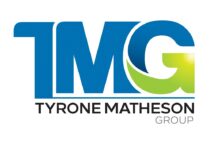Introduction
In the dynamic realm of commerce, “business strength” encapsulates the robustness, resilience, and competitive advantage companies aspire to achieve. It signifies the ability of an organization to withstand market fluctuations, adapt to changing circumstances, and emerge stronger amidst challenges. Business strength is not merely about financial prowess but encompasses various facets, including operational efficiency, strategic foresight, and customer-centricity. As businesses navigate ever-evolving landscapes, cultivating and enhancing their strengths becomes paramount for sustainable growth and success. This article explores how vertical integration catalyzes business strength, reshaping strategies and fostering enduring prosperity in today’s competitive environment.
Vertical Integration: Reinventing Your Strategy
Vertical integration transcends the mere amalgamation of different business components; it signifies a holistic reevaluation and transformation of organizational dynamics. Through vertical integration, companies embark on a journey to consolidate their operations, aligning each stage seamlessly from production to distribution. This consolidation not only eliminates redundancies but also optimizes workflows, thereby enhancing overall efficiency. By eradicating silos and fostering cross-functional collaboration, businesses cultivate a culture of synergy, where every aspect of the operation contributes cohesively towards shared objectives. This unified approach empowers companies to navigate complexities with agility and adaptability, essential attributes in an era where market dynamics evolve rapidly.
Furthermore, vertical integration instills a sense of responsiveness within organizations, enabling them to address market demands and customer needs swiftly. By streamlining processes and minimizing intermediaries, companies can shorten lead times and enhance their ability to capitalize on emerging opportunities. This newfound agility enables businesses to stay ahead of the curve, preempting trends and anticipating shifts in consumer preferences. Ultimately, vertical integration represents more than a strategic move; it embodies a paradigm shift in how businesses operate and perceive their roles within the broader ecosystem. It is a testament to adaptability, innovation, and the relentless pursuit of excellence in an ever-evolving business landscape.
Boosting Business Strength Through Integration
Efficiency takes center stage when businesses embark on the path of vertical integration. Companies embark on a journey to streamline processes and eliminate bottlenecks by integrating various facets of their operations. This integration ensures a seamless flow of tasks, minimizing redundancies and optimizing resource utilization. With fewer handoffs between departments or external partners, the need for coordination and communication decreases, allowing for a more agile and responsive operation. Tasks are completed faster and more precisely, enabling businesses to meet market demands swiftly and efficiently.
Moreover, vertical integration fosters a culture of continuous improvement within organizations. As different value chain components are brought under one roof, businesses gain a comprehensive view of their operations. This visibility enables them to identify inefficiencies, pinpoint areas for optimization, and implement targeted strategies for improvement. Companies can continuously refine their processes and enhance productivity by leveraging data-driven insights and best practices across various functions. This relentless pursuit of efficiency drives cost savings and positions businesses as leaders in their respective industries, capable of promptly delivering superior value to customers.
Supply Chain Security via Integration
Vertical integration acts as a fortress, fortifying the foundation of your supply chain against external vulnerabilities. By bringing critical supply chain components under internal control, businesses reduce their reliance on external suppliers, thereby mitigating risks associated with disruptions or quality inconsistencies. This internalization of critical functions ensures a more stable and reliable supply chain less susceptible to fluctuations in external factors such as market conditions or geopolitical events. With greater control over the production process, businesses can enforce stringent quality standards and maintain consistency across their products or services, bolstering customer trust and loyalty.
The enhanced security provided by vertical integration safeguards against potential disruptions and fosters smoother operations and improved customer satisfaction. By minimizing dependencies on external suppliers, businesses can better manage lead times, reduce production delays, and ensure a steady flow of goods or services to meet customer demand. This reliability and consistency in delivery contribute to an improved customer experience, enhancing brand reputation and positioning the business as a reliable partner in the eyes of consumers. Ultimately, vertical integration offers a strategic advantage by providing a secure and resilient foundation for the supply chain, enabling businesses to navigate uncertainties confidently and maintain operational excellence.
Revenue Diversification: Vertical Integration Impact
Vertical integration serves as a gateway to new revenue streams, offering businesses opportunities for diversification and growth. By expanding into adjacent markets or introducing complementary products or services, companies can capitalize on their existing infrastructure and expertise to unlock additional sources of income. This strategic expansion allows businesses to leverage their core competencies while tapping into new customer segments or addressing emerging market needs. By diversifying their revenue streams, companies reduce their reliance on a single source of income, thus enhancing their financial resilience and mitigating risks associated with market fluctuations or changes in consumer behavior.
Furthermore, revenue diversification through vertical integration strengthens the overall financial foundation of businesses. By tapping into new markets or offering complementary products, companies can spread their revenue sources across multiple channels, creating a more balanced and sustainable income stream. This diversification reduces volatility’s impact in any single market and provides a buffer against disruptions in specific industries or sectors. Additionally, revenue diversification enhances the long-term viability of businesses, positioning them for sustained growth and success in a rapidly changing business landscape. Vertical integration catalyzes revenue diversification, enabling companies to adapt to evolving market conditions and seize new expansion opportunities.
Internal Control: Quality Management Advantage
Vertical integration empowers businesses to maintain a tight grip on quality at every stage of the production process. By bringing various components under internal control, companies can enforce rigorous quality standards from raw material sourcing to the final product delivery. This hands-on approach allows meticulous oversight and monitoring, ensuring that each step adheres to predefined quality benchmarks. With internal control mechanisms, businesses can swiftly identify and rectify deviations or issues, upholding consistency and reliability in their offerings. This commitment to quality enhances the value proposition for customers and serves as a testament to the company’s dedication to excellence.
Furthermore, the hands-on approach to quality control inherent in vertical integration fosters customer trust and loyalty. By consistently delivering products or services of superior quality, businesses instill confidence in their clientele, reinforcing their reputation as a reliable and trustworthy brand. Customers value reliability and consistency, and when they perceive a company to prioritize quality, it strengthens their emotional connection and loyalty towards the brand. As a result, vertical integration ensures operational efficiency and serves as a catalyst for building long-lasting relationships with customers, ultimately driving sustained success and growth.
Mastering Growth: The Vertical Integration Advantage
Vertical integration and horizontal integration represent distinct strategies with different objectives and approaches. Horizontal integration involves expanding market share by merging with or acquiring similar businesses operating in the same industry or market segment. This consolidation of competitors allows companies to increase their market presence, gain economies of scale, and potentially reduce competition. However, horizontal integration primarily focuses on expanding horizontally within the same industry without necessarily controlling different supply chain stages.
In contrast, vertical integration entails controlling various supply chain stages, from production to distribution, within a single entity. Rather than expanding horizontally by acquiring competitors, vertical integration consolidates different aspects of the production process vertically. This approach allows companies to exert greater control over the entire value chain, optimizing efficiency, quality, and cost-effectiveness. By internalizing critical functions such as manufacturing, distribution, or retailing, businesses can streamline operations, minimize dependencies on external suppliers, and ensure product quality and delivery consistency. Overall, while horizontal integration aims to expand market share, vertical integration focuses on enhancing operational efficiency and quality control through internal consolidation of the supply chain.
Synergy Maximization: Vertical Integration Insights
Vertical integration catalyzes maximizing synergies within businesses, creating a harmonious alignment of operations across different functions. By vertically integrating various stages of the supply chain, companies can capitalize on shared resources, knowledge, and expertise to achieve greater efficiency and effectiveness. This alignment fosters collaboration and communication between different departments or business units, breaking down silos and encouraging cross-functional teamwork. As a result, businesses can leverage synergies to optimize processes, minimize redundancies, and accelerate decision-making, ultimately enhancing overall productivity and performance.
Moreover, the synergy-driven approach facilitated by vertical integration fuels organizational innovation and growth. By aligning operations vertically, companies create a conducive environment for exchanging ideas, insights, and best practices across different business functions. This cross-pollination of knowledge and expertise stimulates creativity and encourages experimentation, leading to the development of innovative solutions and products. Additionally, the streamlined communication and shared goals inherent in vertical integration enable businesses to respond more effectively to market trends and customer needs, driving competitive advantage and market differentiation. Ultimately, the synergy-driven approach facilitated by vertical integration propels firms ahead of the competition, positioning them for sustained growth and success in today’s dynamic business landscape.

The Power of Vertical Integration
VVertical integration serves as a catalyst for innovation within organizations by breaking down silos and fostering closer collaboration between different departments or business units. By aligning operations vertically, companies create an environment where teams can seamlessly communicate and share ideas, insights, and expertise. This collaborative approach encourages cross-functional brainstorming sessions, where employees from diverse backgrounds and skill sets can contribute their perspectives and expertise. As a result, innovative solutions to complex challenges emerge, driven by a collective effort to push boundaries and explore new possibilities.
The seamless communication and shared goals facilitated by vertical integration accelerate the pace of innovation within organizations. With a unified vision and clear objectives, teams are empowered to work towards common goals, leveraging their collective strengths to drive progress. This alignment of purpose and effort streamlines decision-making processes and removes barriers to collaboration, enabling organizations to respond more quickly to emerging opportunities or market trends. Ultimately, the culture of innovation fostered by vertical integration drives competitive advantage and positions businesses as leaders in their respective industries, capable of anticipating and adapting to change with agility and creativity.
FAQs
Q: What is vertical integration?
A: Vertical integration involves the consolidation of various stages of production or distribution under one entity, allowing for greater control and efficiency.
Q: How does vertical integration differ from horizontal integration?
A: While vertical integration focuses on controlling different supply chain stages, horizontal integration involves merging with or acquiring similar businesses to expand market share.
Q: What are the benefits of vertical integration for businesses?
A: Vertical integration offers enhanced efficiency, greater control over quality and costs, revenue diversification, and increased resilience to external risks.
Q: Can vertical integration help businesses innovate?
A: Yes, vertical integration can foster innovation by facilitating closer collaboration between different departments or business units, leading to exchanging ideas and insights.
Q: How does vertical integration contribute to supply chain security?
A: Vertical integration reduces dependence on external suppliers, mitigating risks associated with disruptions or quality inconsistencies, thus ensuring smoother operations and customer satisfaction.
Q: Is vertical integration suitable for all businesses?
A: Vertical integration may only be suitable for some businesses, as it requires significant investment and may only sometimes result in the desired efficiencies or cost savings.
Q: What challenges might businesses face when implementing vertical integration?
A: Challenges may include integrating disparate systems or cultures, managing increased complexity, and navigating regulatory or antitrust concerns.
Q: How can businesses maximize the benefits of vertical integration?
A: Businesses can maximize benefits by carefully planning and executing integration strategies, fostering collaboration across departments, and continuously evaluating and optimizing operations.
Q: What role does vertical integration play in business resilience?
A: Vertical integration enhances resilience by reducing exposure to external risks. It enables businesses to anticipate better and mitigate disruptions, safeguarding continuity and reputation.
Conclusion
In conclusion, vertical integration offers a transformative approach to business strategy, amplifying strength, efficiency, and resilience. By reimagining your approach and embracing integration, you can unlock untapped potential, confidently navigate market challenges, and position your business for sustained success. Embrace the power of vertical integration and watch your business thrive in today’s competitive landscape.
Are you ready to turn the assets in and around your business into money? Let’s Talk!
